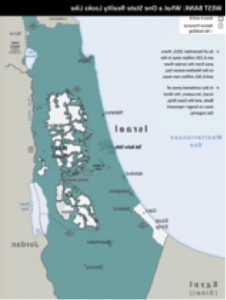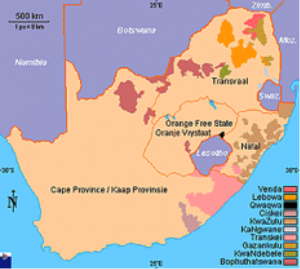Middle East Peace Plan Would Create Palestinian Bantustan
by Edward Marks
The long pregnancy of the Trump Administration’s promised Middle East Peace Plan is about to come to term. Developed under the leadership of Jared Kushner, the President’s son-in-law and special advisor, the work was conducted in secrecy until this year’s well-publicized meetings with various governments and other parties moved the plan to front stage. In late summer Mr. Kushner increased the tempo of travel, promoting the plan to Middle East governments considered potential partners.
Kushner unveiled the first part of the proposed peace plan on June 25, 2019 at the US-sponsored Peace to Prosperity Conference in Bahrain. The proposal decoupled Palestinian financial and economic interests from the political context, an approach that Kushner explained as focused on economic and commercial development ahead of any political resolution.
Apparently the intention was to reveal the full plan in coordination with the Israeli parliamentary elections, with the assumption (or at least the hope) that Prime Minister Benjamin Netanyahu would win re-election, Netanyahu having clearly been an insider in the preparation of the plan. The postponement of the Israeli election until September meant postponement of the Kushner Plan until then.
Although the exact details of the plan remain secret, the main elements are now known. While many parties are involved, the key players remain Israel and the Palestinians. However, Kushner changed the script of many decades by sidelining Palestinian territorial ambitions, attempting instead to build the foundation for peace on economic development rather than political compromise.
The bow to Israeli positions seems obvious, given the relationship between the Israeli and American governments and recent US policy decisions regarding the movement of the embassy to Jerusalem and recognition of Israeli control of the Golan Heights. That the Kushner plan calls for official recognition of Israeli sovereignty over the West Bank (and probably Gaza) is no surprise, considering that the American Ambassador to Israel has already stated this position.
But what would be in it for the Palestinians? The answer appears to be lots of money and “autonomous” authority over designated areas. The core element would be economic development, with $50 billion in investments to boost the Palestinian economy. In addition, the Palestinians would get a de facto Palestinian “homeland” with “autonomous” local authority and external financial support. While the phrase “separate development” was not used, that would be the obvious result.
Notably, this element of the plan is a version of the South African “homeland” concept. Such a political and economic arrangement was one of the central organizing principles of the Republic of South Africa’s apartheid legislation, with territories set aside for black inhabitants. The Promotion of Bantu Self-Government Act of 1959 created 10 Bantu homelands. Ten of these Bantustans were established in South Africa for the purpose of concentrating members of designated ethnic groups, thereby creating ethnically homogenous “autonomous” nation states under the authority of the national government. None of these Bantustans demonstrated political or economic viability, or were recognized by the international community,


Maps showing Bantustans in South Africa; Palestinian areas in Israel;
The second pillar of grand apartheid was the Group Areas Act of 1950. Until then, most settlements had people of different races living side by side. This Act put an end to diverse areas and determined where one lived according to race. While legislation of this type is unlikely to be enforced in Israel proper, this practice exists in effect in the West Bank with the growth of the settler movement intermingled with Palestinian communities. If the Kushner Plan were actually adopted and implemented, legal arrangements would be necessary to define requirements for the separate and ethnically different residential communities in the West Bank. A version of South African apartheid legislation would be inevitable.
In other words, the Trump Administration Middle East Plan appears to call for a Palestinian “Bantustan” (maybe two with Gaza) and legally enforced separation of communities based on ethnic grounds.
It is difficult to believe that this resurrection from the discredited past could be acceptable to anyone but its authors, who appear to be completely oblivious to the history of South Africa. That includes Netanyahu, who has obviously been fully engaged in the plan’s development. However the plan will be unacceptable to everyone else, including Saudi Arabia and other Arab governments who have been flirting with Israel and the US in an informal anti-Iranian alliance. The plan would certainly exacerbate – if that is possible – the relationship between Israel and the Palestinians. The Kushner Plan would be like throwing oil on a fire; it will end badly for everyone concerned.![]()
Ambassador Ed Marks’s foreign service career spanned 1956-1995 with assignments that included Kenya, Mexico, Angola, Zambia, Belgium, Zaire, and Sri Lanka. In 1976, he was appointed Chief of Mission to the Republics of Guinea-Bissau and Cape Verde followed by service as the State Department’s Deputy Coordinator for Counterterrorism and as Deputy US Representative to the Economic and Social Council to the United Nations. Amb. Marks was recalled to active duty in 2002-5 to serve as the Department of State’s advisor on terrorism to the US Pacific Command.

